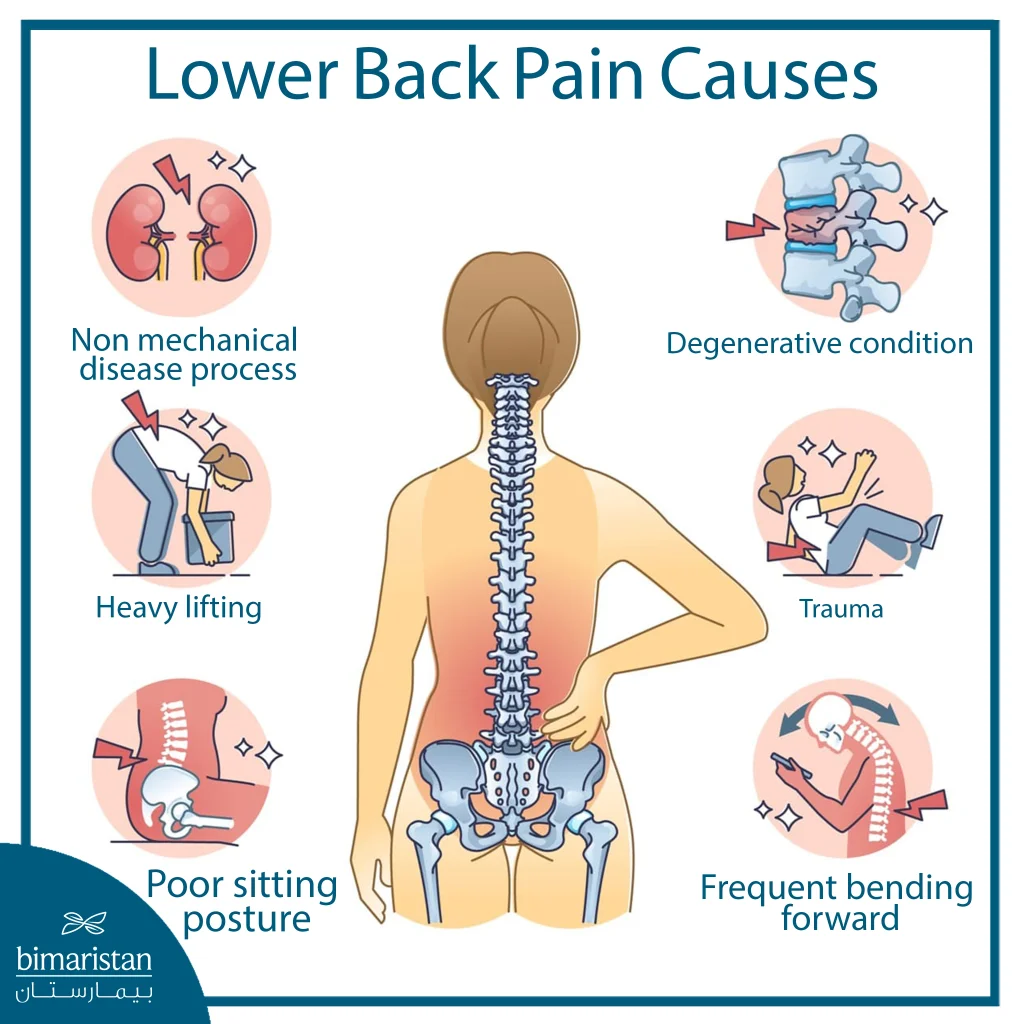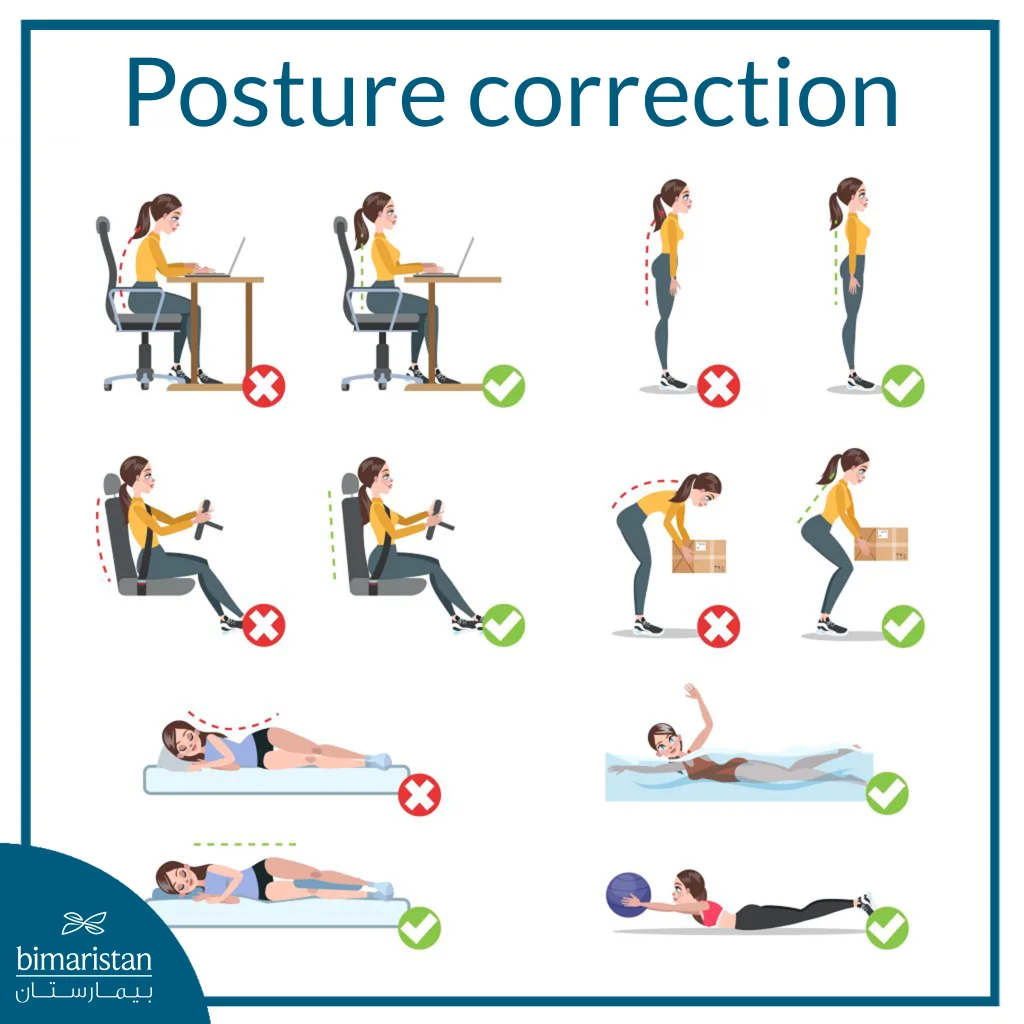Back pain affects nearly 80% of people at some point in their lives, making it one of the most widespread health concerns. Its severity and causes range from mild muscle strain to complex spinal conditions. Thanks to medical progress, back pain treatment now depends on precise diagnosis and modern techniques that ease discomfort and restore mobility.
What is back pain, and why does it occur?
Back pain is defined as a state of pain and discomfort that occurs in the back area, extending from the lower neck to the lower back. The pain may be mild and intermittent, or severe and continuous, preventing the patient from performing their daily activities, and most cases of back pain occur due to straining the muscles or ligaments in the back area, due to wrong movements, or sitting for a long time in an incorrect posture. The pain may result from a herniated disc in the spine, which presses on the spinal nerves and may cause a dysfunction in some motor functions of the body.
In some cases, back pain is associated w.00000000ith more complex issues such as spinal stenosis, spinal arthritis, or osteoarthritis, which weakens the structure of the vertebrae, and in these cases, the patient’s doctor must take some therapeutic measures to prevent the patient’s condition from worsening.

Types of back pain and common symptoms
Doctors usually divide back pain into acute pain that lasts for less than 6 weeks, and chronic pain that exceeds 3 months and may gradually worsen over time:
- Low back pain: The most common type of back pain, caused by prolonged sitting or overexertion.
- Mid-back pain: Often associated with dysfunction of the thoracic vertebrae or surrounding muscles.
- Upper back pain (neck pain): This type of back pain is often caused by a muscle strain or a herniated disc in the cervical vertebrae.
In some rare cases, two or more types of back pain may coexist, in which case you should see your doctor immediately for appropriate treatment.
Common symptoms of back pain
The symptoms of back pain vary depending on the affected area, but some common symptoms are common to all three types, most notably:
- Stiff back
- Difficulty moving
- Pain radiating to the legs or arms
- Numbness or tingling in the extremities
- Muscle weakness
These symptoms may worsen when bending over, sitting for long periods of time, or after physical exertion, and in some cases, pain associated with loss of sensation or issues controlling urine and stool may indicate severe and dangerous compression of the spinal nerves, a condition that requires urgent medical intervention.
Back pain diagnosis
Back pain diagnosis begins with a thorough evaluation by a doctor to determine the exact source of the pain and develop an appropriate treatment plan. The process usually begins with taking a complete medical history, where the doctor asks the patient about the nature, location, duration, and factors that increase or decrease the pain, in addition to lifestyle and previous injuries. This is followed by a clinical examination to assess spinal flexibility, muscle strength, and nerve reflexes, which helps determine whether the pain is caused by muscles, nerves, or the vertebrae itself, and the doctor may need some additional tests, such as:
- X-Ray: To assess the structure of the vertebrae.
- Computed tomography (CT) scan: To more accurately visualize bony details.
- Magnetic resonance imaging (MRI): To detect herniated discs or nerve compression.
- Other tests, Such as blood tests or neurological tests, are used to rule out infections and systemic disorders.
This integrated approach helps to arrive at an accurate diagnosis that guides the most effective treatment for each patient.
The latest back pain treatment methods
The treatment of back pain depends on the type and cause of the condition, and aims to relieve pain, restore normal movement, and prevent future recurrence. A wide range of treatments is available today, ranging from conservative methods to advanced procedures.
Pharmaceutical Back Pain Treatment
A conservative approach to treating back pain, used to reduce pain and inflammation and improve mobility, includes:
- Simple pain relievers, such as paracetamol to minimize discomfort
- Muscle relaxants for acute muscle spasms
- Non-steroidal anti-inflammatory drugs (such as ibuprofen) to reduce swelling and inflammation
- Localized cortisone injections to relieve pain caused by nerve irritation or inflammation around the vertebrae
It should be noted that drug treatment does not completely eliminate the issue, but it does relieve pain and improve mobility.
Physical therapy and rehabilitation
Treating back pain with physical therapy is one of the most effective methods for chronic pain, as it strengthens the back and abdominal muscles and improves flexibility:
- Stretching and corrective exercises to improve posture
- Heat therapy or ultrasound to stimulate blood circulation
- Chiropractic sessions that help restore normal joint mobility
These methods alleviate pain and help the sufferer continue their life with as little pain as possible.
Interventional back pain treatment (without surgery)
It is used when conservative treatment fails to produce sufficient results, and its main techniques include:
- Low-intensity laser therapy to stimulate tissue regeneration and reduce inflammation
- Epidural injection therapy to relieve pain from nerve compression
- Thermal frequency therapy, which aims to disrupt the nerve signals that cause pain
Surgical back pain treatment
It is used in advanced cases such as severe herniated discs or narrowing of the spinal canal. Some of the latest techniques include:
- Laparoscopic disc surgery to remove damaged cartilage through a small incision
- Microscopic disc surgery, which is characterized by high precision, is performed through a small incision
- Vertebral stabilization using plates and screws to keep the spine stable
Tips for preventing back pain and avoiding recurrence
A healthy lifestyle can go a long way in preventing back pain and minimizing the likelihood of recurrence, and the most important tips include the following:
- Improve your sitting and standing posture: Straighten your back while sitting, support your lower back with a small cushion, and avoid excessive bending over in front of a computer or phone.
- Exercise regularly: Back and abdominal muscle strengthening exercises and daily walking should be practiced to improve the flexibility of the spine and increase its muscular support.
- Avoid lifting heavy weights the wrong way: Try to use your knees and not your waist when lifting heavy objects off the ground, and ask for help when lifting very heavy weights.
- Maintain a healthy weight: Maintaining an ideal weight helps reduce pressure on the vertebrae and lower back and reduces the likelihood of chronic back pain.
- Choose a mattress and pillow that are suitable for sleeping: A medium-firm pillow is recommended to support the spine evenly during sleep.
- Avoid prolonged sedentary sitting: It is advisable to move every half hour to move and stretch your muscles and back for a few minutes, especially during office work or long drives.
These simple daily practices are key to maintaining long-term back health and avoiding the return of pain after treatment.

When should I see a doctor?
Although most cases of back pain improve with home treatment and rest, some symptoms warrant immediate consultation with a doctor as they may indicate a more serious issue, including:
- Severe or sudden pain that appears after a fall or direct injury to the back
- Weakness in leg muscles or difficulty walking or standing for long periods of time
- Pain persists for more than two weeks without improvement despite rest and simple treatment
- Loss of control over urination or bowel movements is a medical emergency that may indicate cauda equina syndrome
- High fever or unexplained weight loss, as these signs may indicate inflammation or a tumor
- Pain radiating to the legs or feet with numbness or tingling, which may indicate compression of the spinal nerves
If any of these symptoms appear, it is advisable to see a specialized doctor in order to perform the necessary tests and early intervention before the condition worsens.
Treating back pain is an essential step towards improving quality of life and returning to daily activities without suffering. At Bimarestan Medical Center in Turkey, patients are offered an integrated treatment approach that combines the latest diagnostic methods and state-of-the-art therapies by specialized physicians. Thanks to this advanced care, the patient can confidently and safely regain their comfort.
Sources:
- National Institute of Neurological Disorders and Stroke (NINDS). (2023). Low Back Pain Fact Sheet.
- American Academy of Orthopaedic Surgeons (AAOS). (2024). Low Back Pain.
